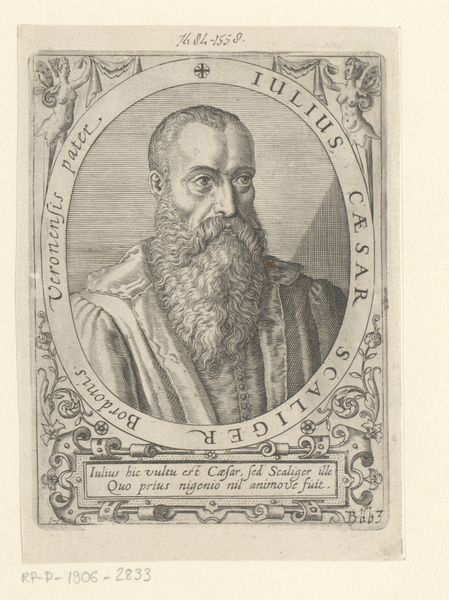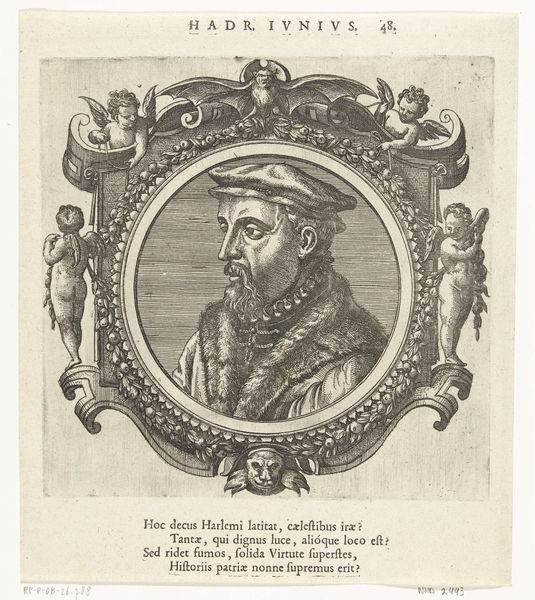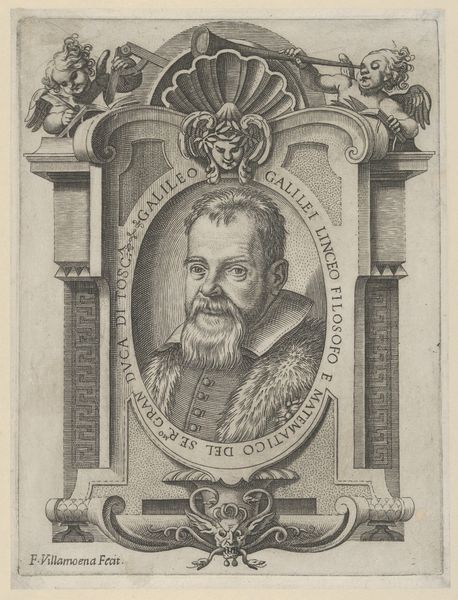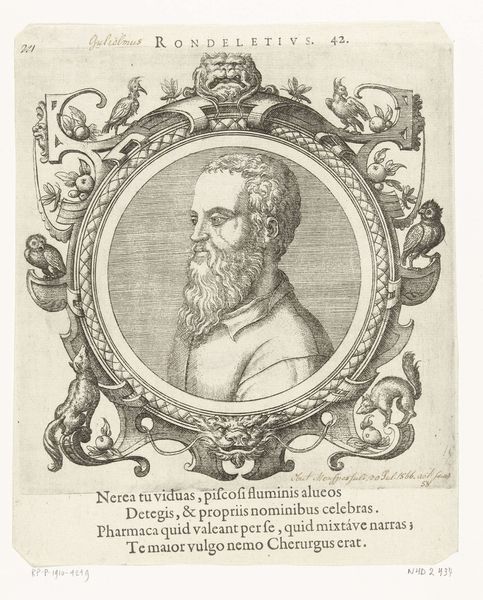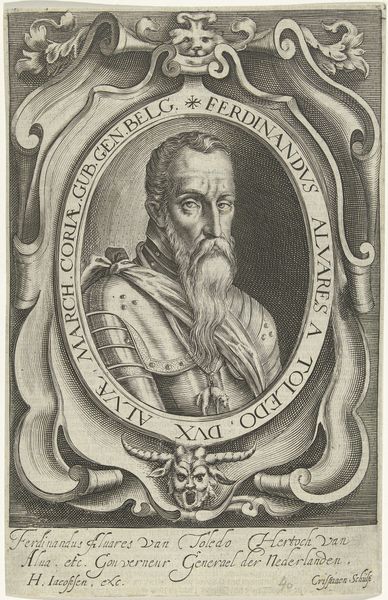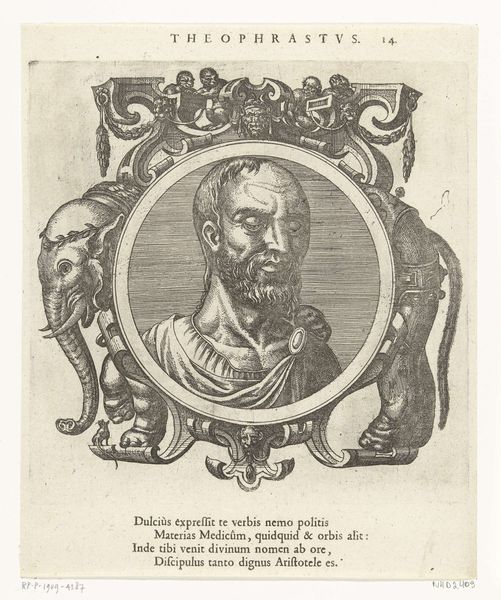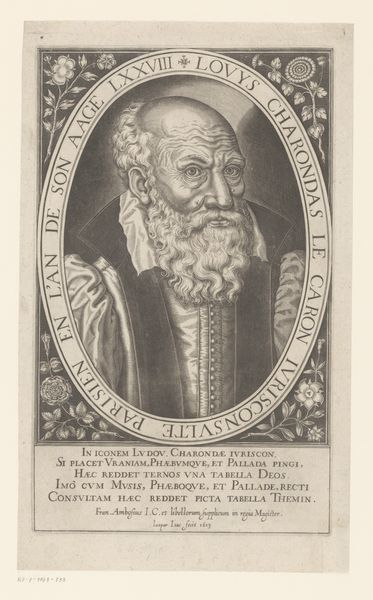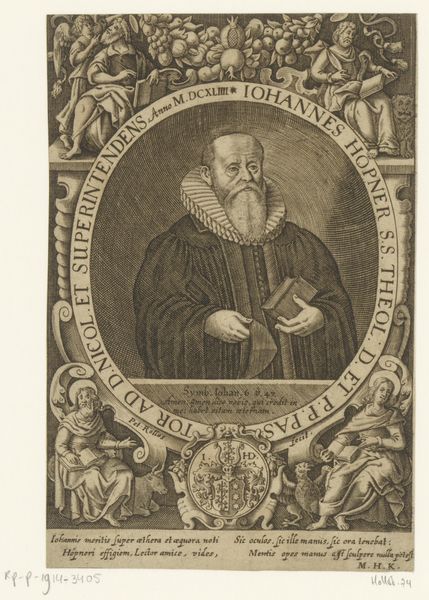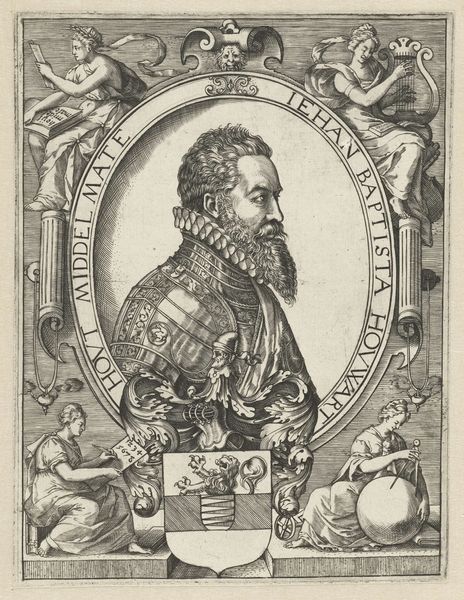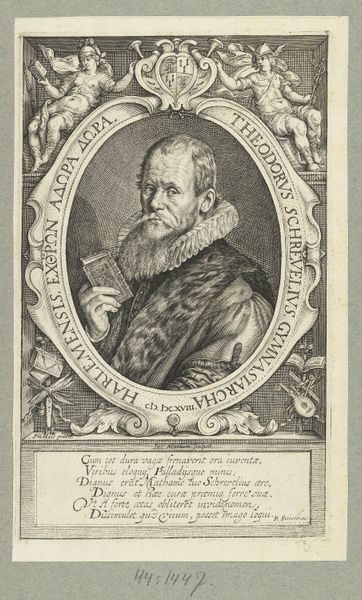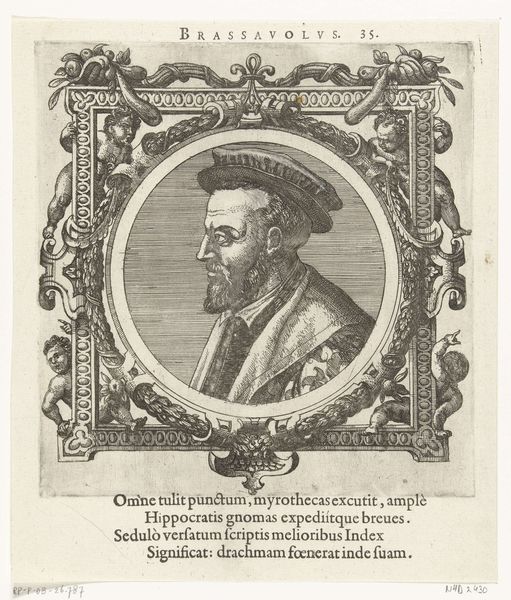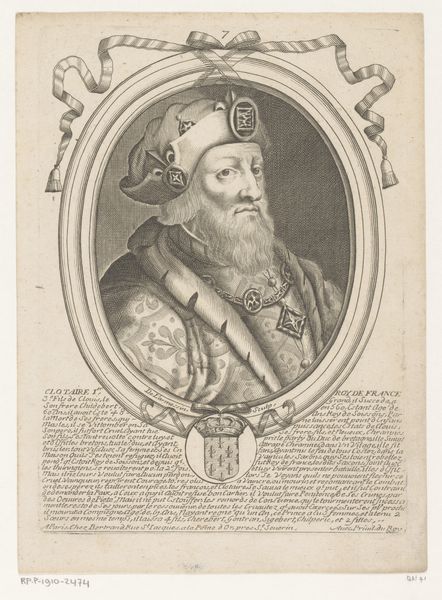
Dimensions: height 276 mm, width 200 mm
Copyright: Rijks Museum: Open Domain
Editor: This is a print entitled "Portret van Julius Caesar Scaliger," possibly from between 1590 and 1917, attributed to Hendrick Goltzius. It’s a striking portrait, almost overwhelming with all the surrounding ornamentation. What jumps out at you when you look at this piece? Curator: Immediately, I consider the production of this image. Engravings like these involved a significant amount of labor and skill, transforming base materials into commodities. This image wouldn't have been widely accessible; the consumption would have been limited to a specific socio-economic class. Does the inscription at the bottom give us a clue regarding how it was made? Editor: It does. The OCR tells us: "First in lead, now in green/copper, Goltzius engraved this with his burin". How does the choice of material impact its meaning or value? Curator: Copper, though more durable than lead, was still a valuable resource. Consider the tools required, the skill of the engraver shaping metal – the labor embedded in each line. This elevates the portrait beyond mere likeness; it becomes a testament to the material conditions of its creation. Did Goltzius sign this engraving anywhere? Editor: He did. Down in that ornamented little rectangle with the Latin inscription, "Caravit lima hunc Goltzius artifici". Do you think that using printmaking changed how portraits like these were consumed compared to painted portraits? Curator: Absolutely. Printmaking, though still requiring considerable skill, allowed for a degree of reproduction, which opened up new markets and expanded the visibility of figures like Scaliger. Yet, even in reproduction, the labor of the artist and the value of the materials shaped its reception and social meaning. Each print carries that embedded history of its making. Editor: I see, so by looking at the materials and methods used to create this portrait, we get a much deeper understanding of its historical and social context. Thanks. Curator: Precisely. Looking beyond the surface image towards the hands that made it opens new pathways of understanding.
Comments
No comments
Be the first to comment and join the conversation on the ultimate creative platform.
